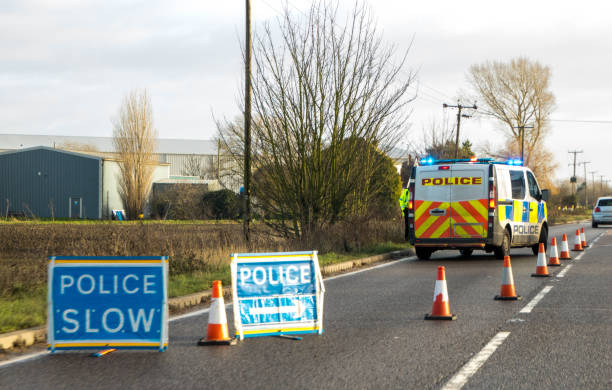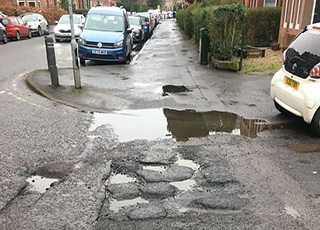
The Pervasiveness of Potholes: A Cause of Damage and Frustration for Drivers
As drivers navigate the intricate web of roads crisscrossing the United Kingdom, they encounter a ubiquitous and often frustrating adversary—potholes. These road imperfections, born from the wear and tear of weather and traffic, not only pose a threat to the smoothness of the journey but can also wreak havoc on vehicles. This comprehensive guide aims to illuminate the impact of potholes on vehicle damage, safety risks, and empower drivers to report these nuisances and seek compensation for damages incurred.
The Impact of Potholes on Vehicle Damage and Safety Risks
Potholes are more than mere annoyances; they are catalysts for vehicle damage and safety risks. From misaligned wheels to damaged suspensions, the toll on vehicles can be significant. The guide will delve into the intricacies of the damages caused by potholes and underscore the importance of addressing safety concerns associated with these road hazards.
Empowering Drivers to Report Potholes and Seek Compensation for Vehicle Damage

Step 1: Identifying and Documenting the Pothole and Damage
Locating the Pothole: Accurately pinpoint the location of the pothole for reporting purposes
The journey begins with identifying the culprit. Drivers will learn how to accurately locate potholes, ensuring that their reports are precise and actionable.
Assessing the Pothole’s Severity: Determine the size and depth of the pothole to gauge potential damage
Understanding the severity of a pothole is crucial in estimating potential damage. This section guides drivers in assessing pothole dimensions to better prepare for potential claims.
Documenting the Pothole: Take clear photographs and videos of the pothole from various angles
A picture is worth a thousand words, especially when it comes to reporting. Here, drivers will understand the importance of clear visual documentation to strengthen their case.
Step 2: Reporting the Pothole to the Relevant Authority

Identifying the Responsible Authority: Determine which local council or highway authority is responsible for maintaining that road
Navigating the bureaucratic landscape requires knowing where to direct reports. This section assists drivers in identifying the responsible authority for a given road.
Reporting Online: Utilise online reporting platforms provided by local councils or highway authorities
The digital age has streamlined the reporting process. Drivers will learn how to leverage online platforms to efficiently report potholes.
Reporting by Phone: Contact the responsible authority’s customer service line to report the pothole
For those who prefer a more direct approach, reporting by phone is an option. This section guides drivers on effectively communicating with relevant authorities.
Step 3: Gathering Evidence of Vehicle Damage
Documenting Vehicle Damage: Take clear photographs and videos of the vehicle damage caused by the pothole
Evidence is the cornerstone of a successful claim. Here, drivers will understand the importance of documenting vehicle damage thoroughly.
Obtaining Repair Estimates: Seek estimates from reputable auto repair shops to quantify the cost of damage
Putting a financial figure on damages is essential for compensation. This section provides guidance on obtaining accurate repair estimates.
Gathering Additional Evidence: Collect any relevant receipts, invoices, or medical records related to the damage
Comprehensive evidence goes beyond photographs. Drivers will learn to gather additional documentation to strengthen their claim.
Step 4: Initiating a Claim for Damages
Completing Claim Forms: Download and fill out the appropriate claim forms provided by the responsible authority
Navigating claim forms can be daunting. This section simplifies the process, guiding drivers through the completion of necessary paperwork.
Submitting Claim Forms: Submit the completed claim forms along with supporting evidence to the relevant authority
The submission is a critical step. Drivers will understand how to compile and submit their claim packages effectively.
Following Up on the Claim: Maintain regular communication with the authority to track the progress of your claim
Patience is key. This section advises drivers on the importance of staying informed and actively following up on their claims.
Step 5: Seeking Additional Assistance if Needed

Consulting Legal Advice: Seek professional legal guidance if the claim process becomes complex or disputed
Legal nuances can be overwhelming. This section provides insight into when and how to seek legal advice for complex claims.
Utilising Claim Management Companies: Consider using claim management companies to handle the claim process on your behalf
For those seeking professional assistance, claim management companies are an option. This section explores the pros and cons of this approach.
Escalating the Claim: Notify the Local Government Ombudsman if the claim remains unresolved despite reasonable efforts
In cases of unresolved disputes, drivers will learn about the recourse available through the Local Government Ombudsman.
The Importance of Reporting Potholes: Active reporting contributes to road safety and reduces future damage
This section underscores the societal impact of reporting potholes, emphasizing how an active reporting culture can contribute to road safety and reduce the occurrence of future damages.
Seeking Compensation for Vehicle Damage: Drivers have the right to claim for damages caused by potholes
Drivers are reminded of their rights in seeking compensation for damages caused by potholes, reinforcing the importance of holding responsible authorities accountable.
Navigating the Claim Process with Confidence: Understanding the steps and seeking assistance when needed ensures a smooth process
In conclusion, this comprehensive guide empowers drivers to navigate the pothole reporting and claiming process with confidence. By understanding the intricacies of each step and seeking assistance when needed, drivers can ensure a smooth process, contributing to safer roads and fair compensation for damages incurred.


